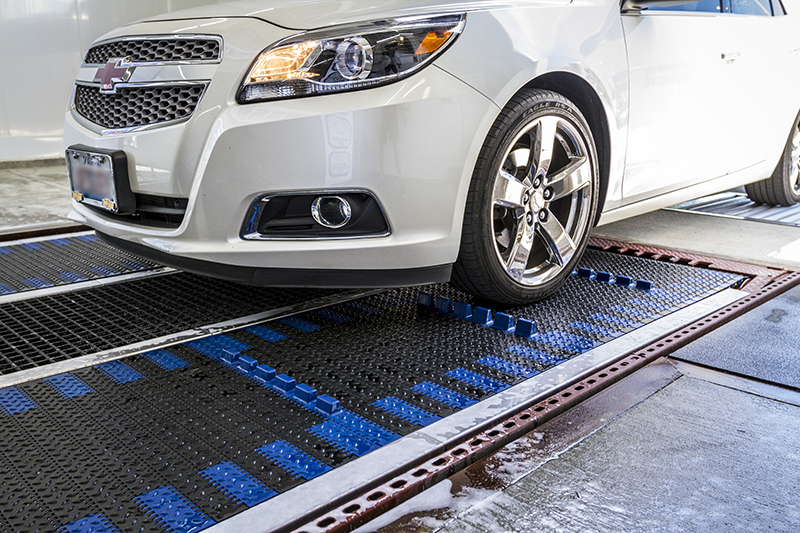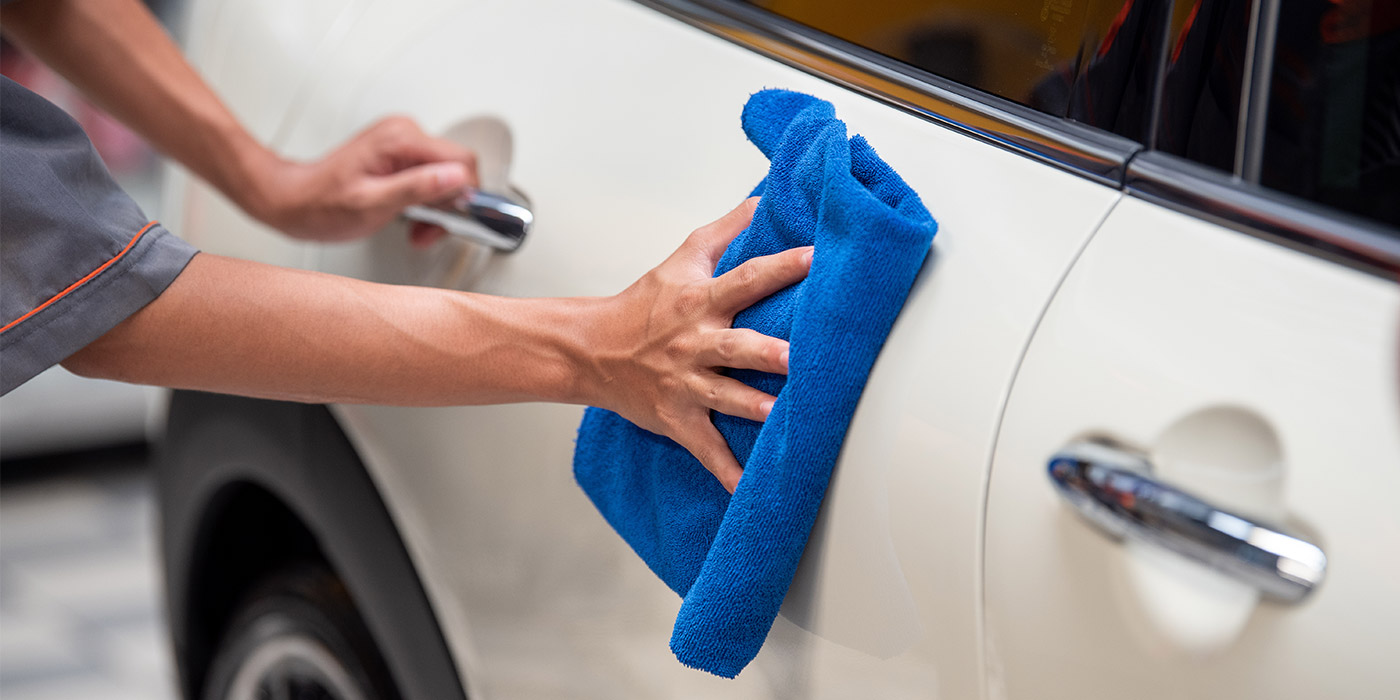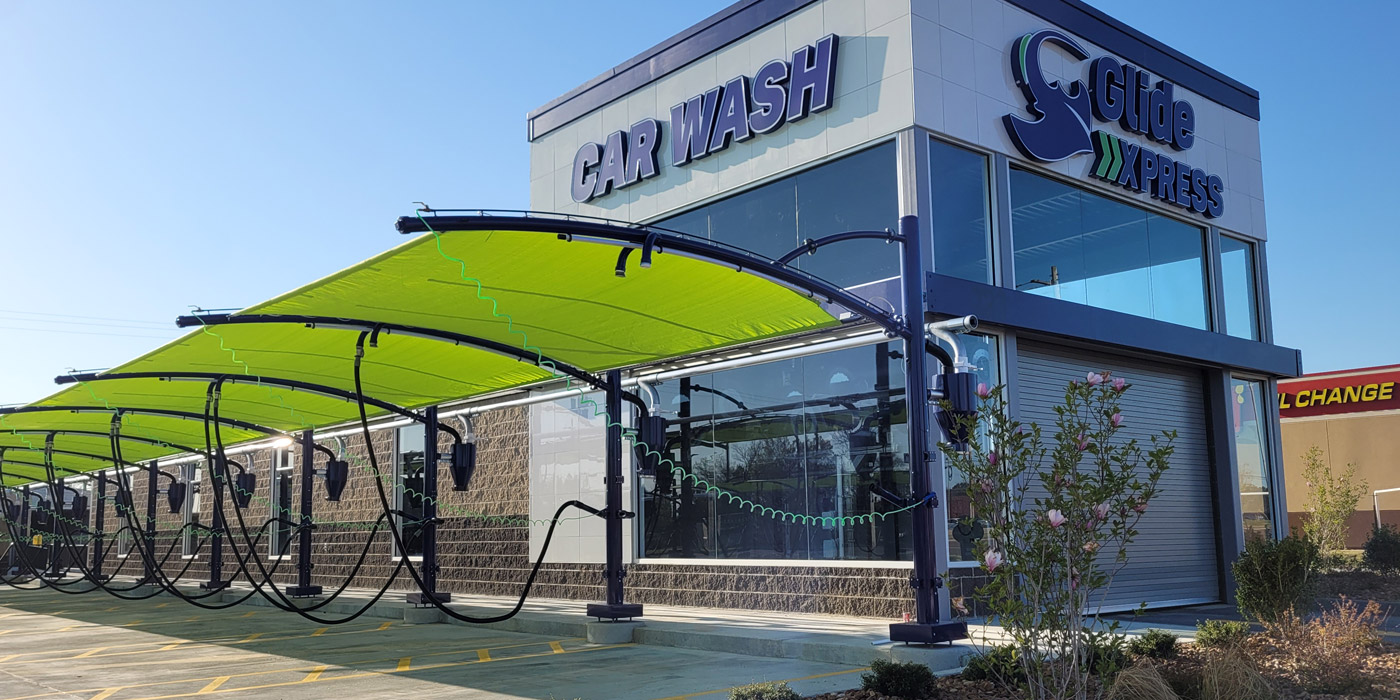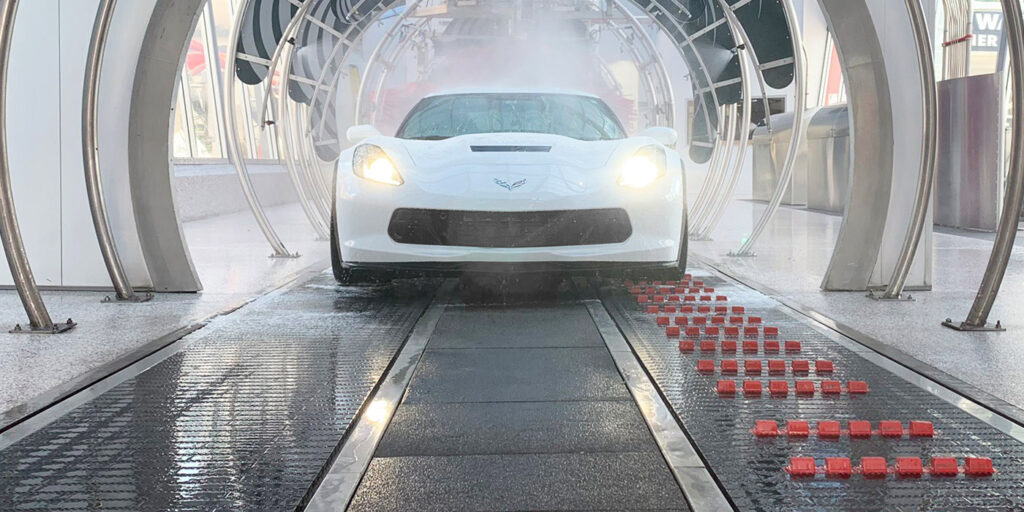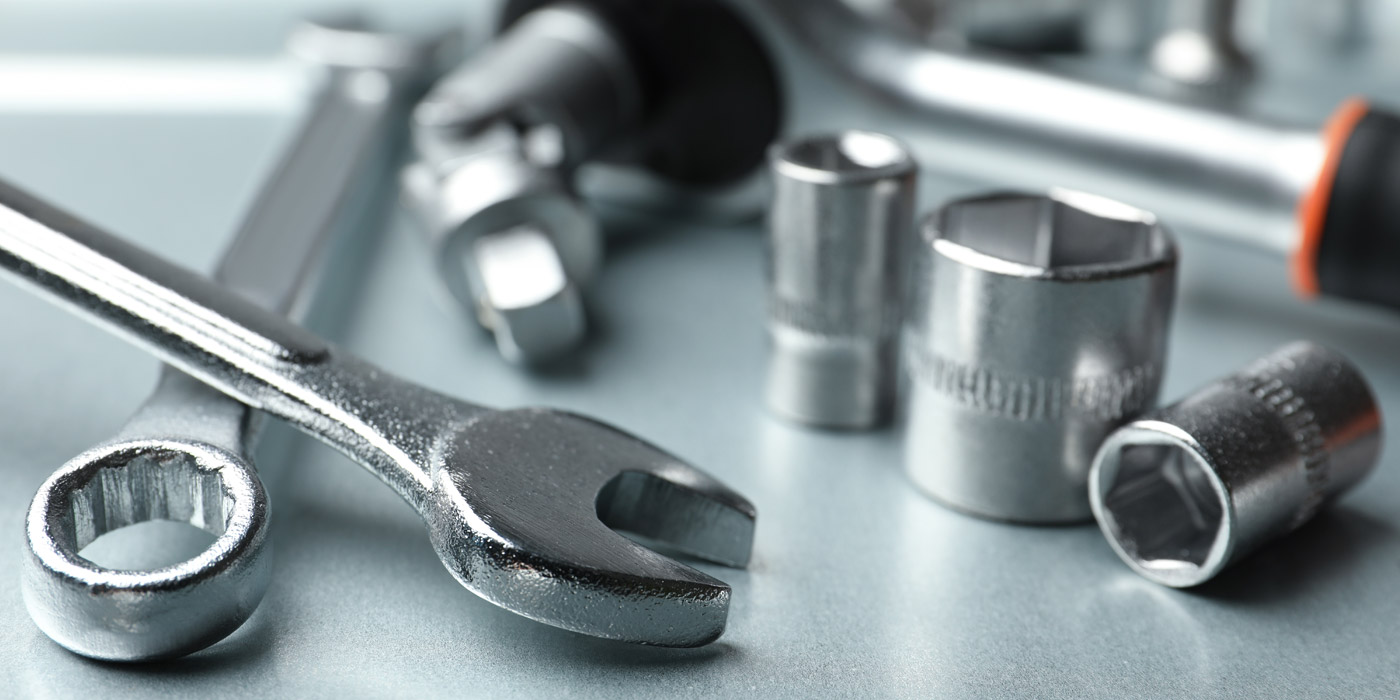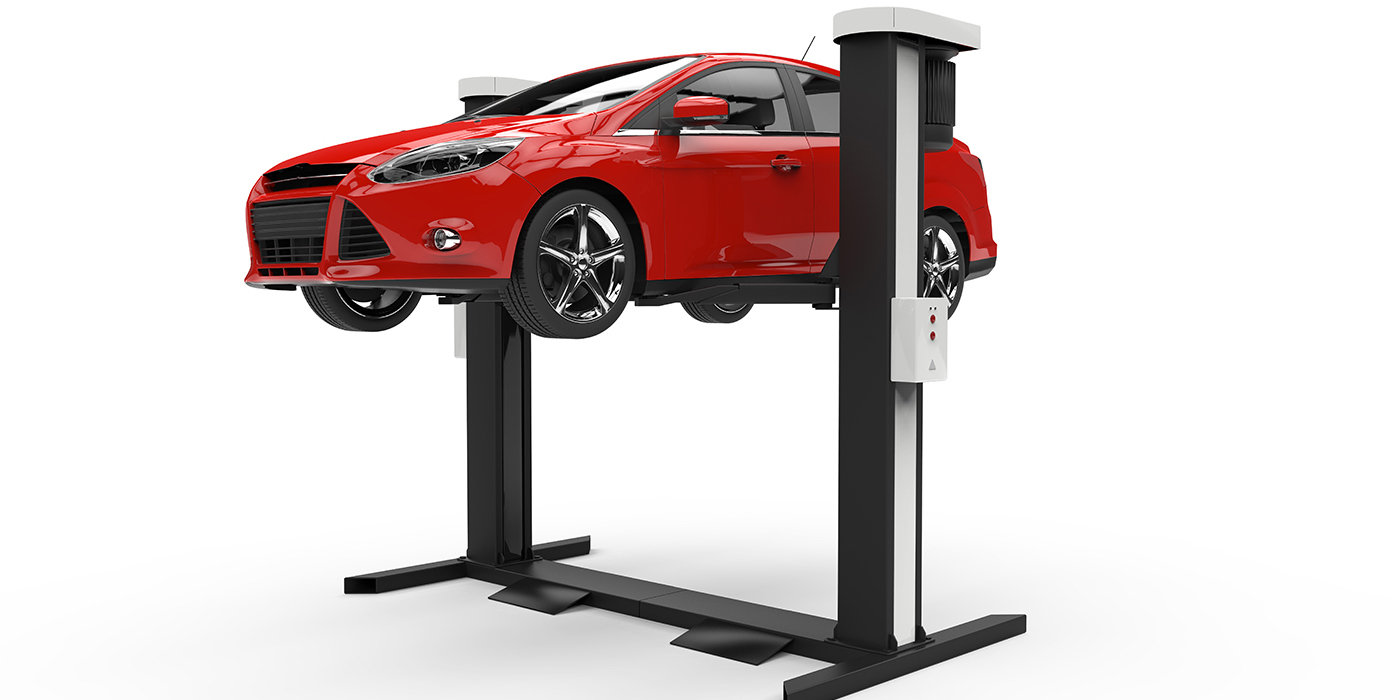While guessing the future of the carwash industry may be impossible, some areas of evolution have definitely become evident. Modern, inviting washes now have the most leverage when it comes to generating repeat business in a competitive and crowded car care market. Upkeep, cleanliness, convenience and efficient operation are all immensely important to the typical carwash visitor. Updated and well-maintained locations are those most likely to provide safe and dependable services to all shapes and sizes of vehicles.
Ensuring a location is inviting to all customers is one goal that requires many steps to complete. One equipment update that opens up wash locations to accepting almost every type of vehicle is upgrading a tunnel to a modern belted conveyor system. These conveyor systems stand ready to affect everyday operation by pushing wash speeds and improving employee and customer safety while reducing potential damage claims.
Related: Carwash Safety 101: The risks on high-volume days
Developing design
Today’s belted-conveyor designs are still continuously improving, states Bob Schaefer with Automatic Vehicle Wash Equipment Co. Inc. In fact, this type of conveyor now washes more than double the amount of vehicles between maintenance intervals than it did just a few years ago. Product design, installation and operating parameters all have improved the ease of loading for the consumer, and experience has proven which mechanical design parameters can be altered for efficiency and which are essential to the application.
Lawrence Stovall, owner of AutoBrite Co., agrees that new conveyor designs have improved over older technology in several significant ways. First, the polymers used to make the actual belt material have improved the wear longevity of the conveyor belts. In addition, the conveyors’ internal cleaning systems help keep the belts free from debris while they are in operation.
Depth and width flexibility are other recent advances made with belted conveyors. Traditionally, belt conveyors have followed the over and under design and required a trench 18 inches deep to operate, Stovall notes. A new, low-profile system that is only 8 inches deep has been available for approximately five years. Here, operators can build the system without having to dig a trench, and this means an owner can put the carwash in places that have a paved or concrete surface. Modern conveyor options are highly customizable when it comes to width as well. Now, operators have the option of different belt widths that are more in line with modern vehicles and market demands.
Finally, the ability to wash vehicles while they are stationary will prove to be an important feature in the future. “The belt systems can now be operated with the vehicle in park,” Stovall explains. “This does two things for the operator: It gives them time to prep a vehicle if that is part of their wash process, and it will make it easier to wash self-driving vehicles in the future.”
Related: Problem vehicles at the carwash
Loading and controllers
Belt conveyor designs allow the systems to accept vehicles more rapidly than traditional equipment, Schaefer notes. There is no “roller call” on a belt, so the typical load wait time of a few seconds is eliminated. The tunnel controllers detect vehicles at the wash entrance with photo eyes or proximity sensors as they roll onto the equipment. Technically, nothing really changes involving the relationship between the controller and conveyor. The vehicles just arrive more frequently.
These faster loading times allow sales to increase, and today’s tunnel controllers are capable of handling the higher speed, Schaefer states. If the car count increases dramatically — up to a customer every 15 to 20 seconds like some contemporary washes — an operator may find that one or two point-of-sale kiosks cannot keep up. A wash may have to add another kiosk to meet capacity.
“Consumer behaviors are better understood by operator experience, and processing practices that exploit belt capabilities have dramatically improved processing rates,” Schaefer says.
Stovall states that most conveyor belt systems are designed to operate with any of the tunnel controller systems on the market. On the electric-driven belts, variable frequency drives (VFDs) are used to give operators the flexibility to increase or decrease the throughput of their tunnel as situations may demand.
Modified vehicles
Faster loading speed is not the only advantage offered by belt conveyors. Most belt systems allow for wider wheels as well as vehicles with lower profiles, according to Stovall. There are no rails needed to guide the vehicle and keep it in place.
On “park conveyor systems,” vehicles can be put in park on the belt. In these washes, because there are no cleats, Stovall has seen many low-profile, high-performance vehicles such as Lamborghinis, Maseratis and Porches loaded onto the belts. Furthermore, in markets where dually pickup trucks with wide tires and other service vehicles are common, different size belts can easily accommodate these vehicles.
For many carwash operators, customized vehicles have been equivalent to problem vehicles, Schaefer reveals. Aftermarket modifications with questionable durability are still an issue, but overall, belt conveyors are more accepting. Wide wheelbases, tire widths of more than 13 inches, lower profile tires with exposed rims, ultra-subcompact cars and dually trucks can all become routine vehicles to a carwash equipped with a belt conveyor.
Safer tunnels
Belt conveyors are much safer for wash employees, because there are no moving parts on the surface like there are on traditional over and under conveyors, Stovall notes. Employees can actually stand on the belt without fear of getting their feet caught in the system. Even so, many of these modern conveyors are designed and built to be unmanned. No employees are necessary, leading to a larger return on investment for operators. That said, employees should always be fully trained regarding any carwash equipment and chemicals they will be exposed to.
Any moving machine with mechanical power will always present some degree of safety risk, but belt conveyor designs do reduce that risk, Schaefer reveals. Although it is not recommended to ride an operating belt in a carwash, if an employee steps on a belt accidentally during operation, the odds that he or she will be upended or caught are drastically reduced. If employees stay away from the ends of a belt conveyor when it is not locked out, the odds of getting hurt are definitely lower. There is nothing to get pulled into on a belt except as the belt and pushers drop under the conveyor at the wash exit.
Schaefer lists other belt conveyor benefits that can improve site safety:
- There are fewer moving parts to maintain under the conveyor.
- The required maintenance intervals are less frequent.
- There is no chain tension mechanism with which to contend.
- There are no moving rollers on which to get caught.
- There is no roller up mechanism to operate or maintain.
Vehicle damage claims are another concern that modern belt conveyor designs can address. The first and most obvious advantage is the absence of a guide rail needed on a roller and chain conveyor, Stovall explains. Having no rail eliminates scratching damage that can happen on some vehicle wheels and rims. Also, there is no worry about the front end of low-profile vehicles when entering the wash.
Next, on a dual belt system, all four tires are on the belts and not rolling, so there is no need to worry about automatic braking systems or a customer applying the brakes or turning the steering wheel in the tunnel. “In a traditional conveyor system, many accidents happen when the customer either brakes or turns the steering wheel, sending the car off course,” Stovall says. “On a park conveyor system — conveyors where the vehicle is in park — the automatic braking systems are turned off, eliminating any incidents that these systems may cause.”
Best practices
Stovall states that the best manufacturers will work with the carwash owners they serve as partners. A best practice these companies can reinforce is working to make sure operators are highly trained in every aspect of turning a belt conveyor system into an excellent addition that garners a high return on investment. Following the best preventative maintenance plans will ensure that any systems remain virtually maintenance-free as well.
Schaefer’s recommended best practices for belt conveyor carwashes include eliminating or minimizing prepping whenever possible. A carwash should keep its loading process consistent. “Customers do learn — by experience and by watching the customer in front of them,” Schaefer continues. “Make their loading process just like the one they just watched.”
Distractions at loading can be an operator’s enemy, according to Schaefer. Too many signs, too many directions, inconsistent hand signals from employees, multiple choices to make while trying to load, extraneous activity and any other types of commotion are all highly counterproductive. Additionally, employees should always direct customers to put down cellphones before they attempt load.
Carwashes should also work to avoid manually loading. There should be an attendant readily available only if trouble arises, according to Schaefer. In this instance, pre-emptive training in procedures to quickly and safely resolve issues has proven highly valuable.
For Schaefer, consistency is key. “Run your conveyor at a constant speed every day, in every condition,” Schaefer concludes. “Slowing and speeding up your conveyor will typically affect wash quality and may frighten or distract customers or cause a change in their behavior. Remember — make the experience consistent.”
Sam Albertson is a freelance contributor.

